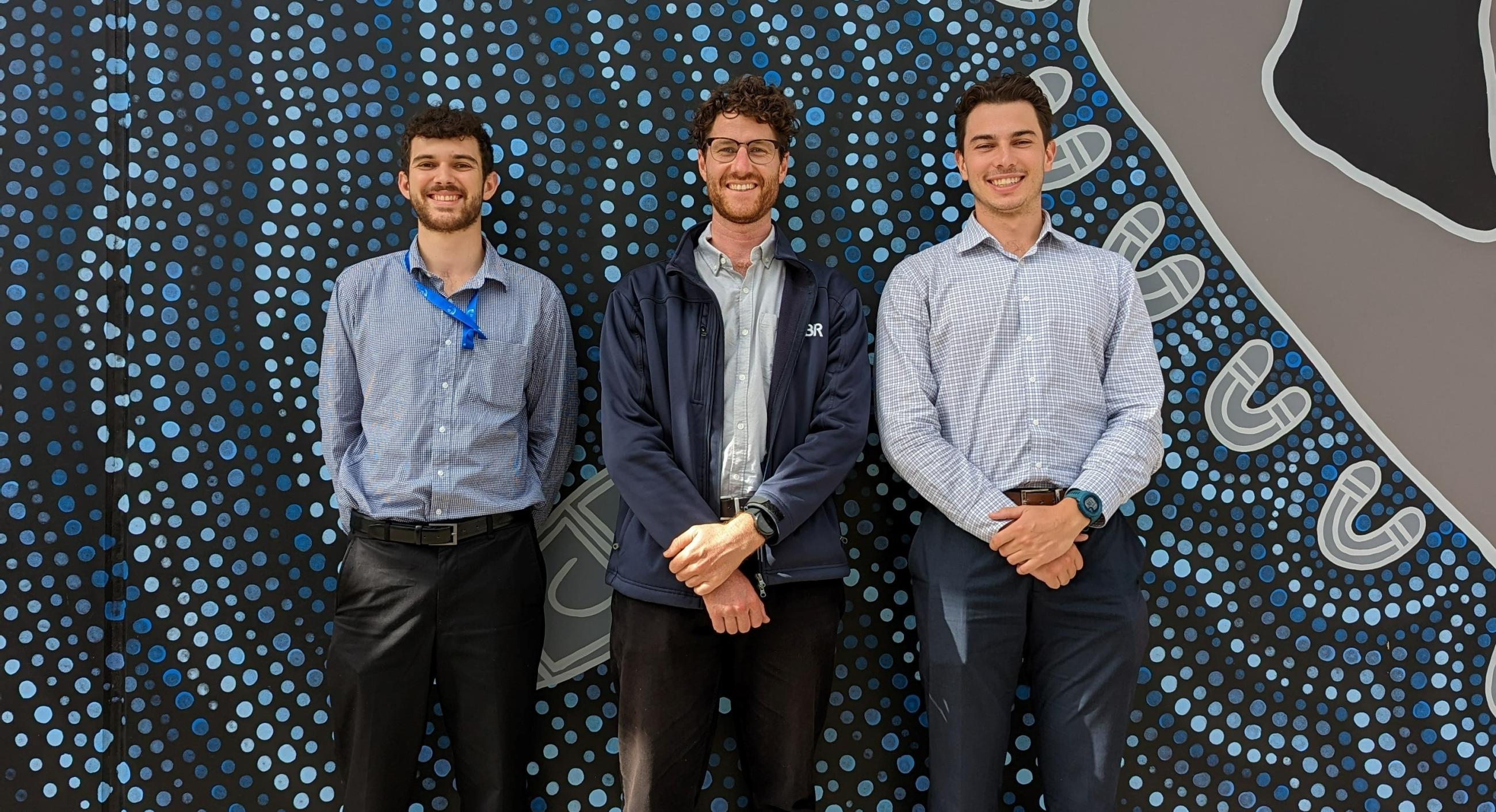KBR’s Engineering Graduates are Leading the Way in APAC
Over the past five years, 15 young engineers have passed through the KBR Government Solutions (GS) APAC Engineering Graduate program. These young professionals work within the Amphibious Combat and Sealift Systems Program Office (ACSSPO) at the Garden Island Defence Precinct, providing assurance on the Royal Australian Navy’s largest capital assets – the Landing Helicopter Dock (LHD) and Landing Ship Dock. The graduates have rotated through various roles to develop an understanding of functions required to provide materiel seaworthiness and assurance on behalf of Navy.
KBR’s broader graduate program has been key to developing the careers of young professionals in our business across a range of disciplines including engineering, finance, data analytics and project management.
Two of our current engineering graduates tell their story.
Hayden Molla
Hayden joined the team at KBR earlier this year as an engineering graduate working with the ACSSPO at the Garden Island Defence Precinct in Sydney. In this role, he works across the Amphibious Combat and Sealift Platforms through the LHD Capability Support Coordinator program – a contract which KBR has supported for the past decade.
“In my role as a graduate engineer, my day-to-day is largely focused on working on engineering changes that are concerned with ensuring that the ships maintain compliance with relevant regulations on things such as the safety and environmental impact,” explains Hayden.
He applied for the KBR graduate program in the final year of his Aerospace, Aeronautical and Astronautical Engineering at the University of New South Wales as he was interested in a career in a global company that worked on Australian Defence projects.
“After reading about the work that KBR does in Australia and throughout the world, I knew that the graduate program would be the perfect mechanism to grow myself as an engineer and contribute to exciting projects.
“A career at KBR stood out for me due to the pride the company has in delivering for its customers. This philosophy really attracted me because it is a company focused on building a reputation that is based on the quality of its services.”
For Hayden, it's the connections, networks and experience of others that has accelerated his learning faster than he ever expected. In his short time working for KBR, Hayden has received mentoring and advice from senior team members at KBR and in defence.
“While I’ve only been on board for a few months now, I’ve really benefitted from the exposure I have had to experienced personnel from KBR and other parts of the SPO. There are so many experienced engineers and naval architects throughout the office who are always willing to take the time to teach me new concepts and the proper ways of doing things. This helps me be sure that any work I am doing is in accordance with expectations, and it makes the learning process much faster.
“It’s a really unique opportunity. I have the opportunity to work directly on some of Australia’s largest assets and defence programs and we’re granted access to go on board the ships to better understand some of the tasks that come our way.
“Being so close to the customer and the vessels means that, every day, I develop more of an appreciation for the complexity and importance of these ships. The work we’re doing is a having a real-life impact and it’s exciting to be part of that,” he says.
Jay Marosa
Jay started with KBR as an engineering intern in 2021. After graduating with his engineering degree from the University of New South Wales in 2022, and having enjoyed what he learnt about the defence industry from his internship, Jay joined KBR full time as part of the KBR Graduate Program in March 2023.
Jay is currently working within the Systems Safety Engineering Team at the ACSSPO. His role involves managing systems safety impacts which may arise from redesigns and modifications made to the ships and reviewing hazards and risks to ensure they are eliminated or minimised.
“My day-to-day often involves reviewing safety incidents which occur on the ships, contacting other engineers for updates on safety-related ship changes, and preparing safety hazards for regular review,” he explains.
“I really enjoyed problem solving at school, which is why I decided to pursue an engineering career. Now in this role, I get to problem solve every day.
“The graduate program has provided me with the great opportunity to see in-person the different engineering changes on the ship in real-time. This has been beneficial in giving me a new perspective of the processes and challenges involved in physically implementing the solutions to our problems.”
Through the program, graduates are exposed to different areas of the business through rotations. Across eighteen months, graduates get the opportunity to work across different lines of business, exposing them to a range of different opportunities and expertise.
Like Hayden, Jay has found the support of experienced professionals working in the ACSSPO invaluable and is looking forward to leveraging that more for the remainder of his rotation.
“One of the things that has been most beneficial is the support and learning I get from other engineers – everyone is always happy to answer any of my questions and help me understand the best way to do things. It’s also been great to have a network of other graduates to get to know and bounce ideas off.
“Over the next few months my goal is to learn about and be involved in as many different areas of ACSSPO as possible. All this experience will help me become a well-rounded, knowledgeable, and productive engineer and that will only be strengthened as I move through different rotations in the business,” he says.




